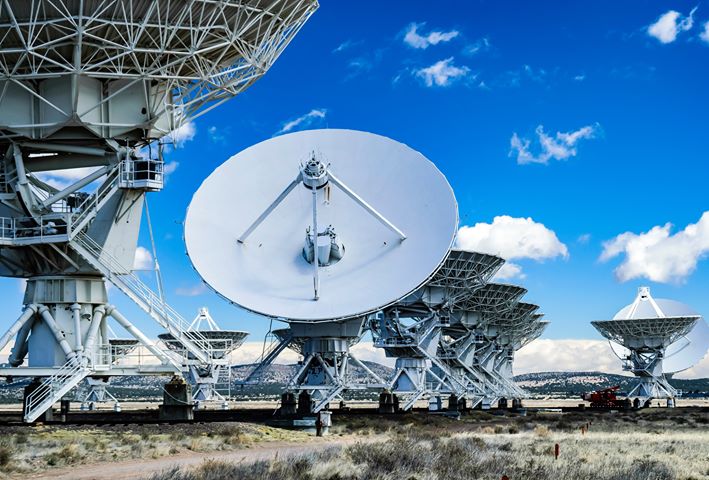What Determines the Diameter of a Radio Telescope?

Question:
I’m teaching a course on multi-wavelength astronomy for members of the NYC Amateur Astronomers Association.
A question arose about the size of radio dishes. The is simplest answer was that the diameter is primarily of function of the wavelength the radio telescope was designed to center on. A number of wikipedia and internet sources seem to concur, without much analysis. For many it’s “obvious” that longer wavelengths dictate a larger antenna diameter. I’m not so sure! I’m always dubious about public, popular sources of information.
I’ve had courses on radio astronomy online for my Masters from Swinburne University, Melbourne. My understanding is as follows:
1) The large diameters are dictated by the need for very large collecting surfaces since radio signals and radio photons are remarkably weak. A bigger bucket is needed to catch mist droplets!
2) The area (or effective area for an array) is also a prime determinant of the resolution of a radio dish. I believe resolution is a function of the ratio of area and wavelength being monitored, but I have no access to my books now.
3) I’m willing to concede there may be an optimal diameter for a particular wavelength but this is not the primary factor. Any dish of any size can capture a portion of any radio signal of any wavelength. Is this to extreme a formulation?
I promised the class I’d get to the bottom of this question on radio dish size. If you can help, great.
Thanks, Prof. David Kiefer
Answer:
You basically have the correct answer. The considerations used when setting the size of a radio telescope are:
- Shortest Observing Wavelength: The shortest observing wavelength at which a radio telescope antenna or array will be used to make observations determines the largest diameter for the antennas. The shortest wavelength determines how accurately the surface of the antenna needs to be in order to efficiently gather photons, which largely limits the maximum size of the reflector.
- Larger Antennas Collect More Photons: As you mention, antennas are “photon buckets”, where the larger they are the more photons they can collect. If they get too large, though, they become ineffective at collecting photons (point 1 above).
- Finest Details One Wants to Measure: The smallest details that a radio telescope can measure is inversely proportional to its diameter, so the larger the antenna the finer the detail that one can measure. Point 1 above limits this maximum size, though.
- Array or Single Antenna: With an array of antennas, one can increase the fine detail that can be measured by separating the antennas in an array so they are farther apart. This is a way to get around the limitations of point 1 above, but does present certain complications for how the measurements are made and interpreted, though.





